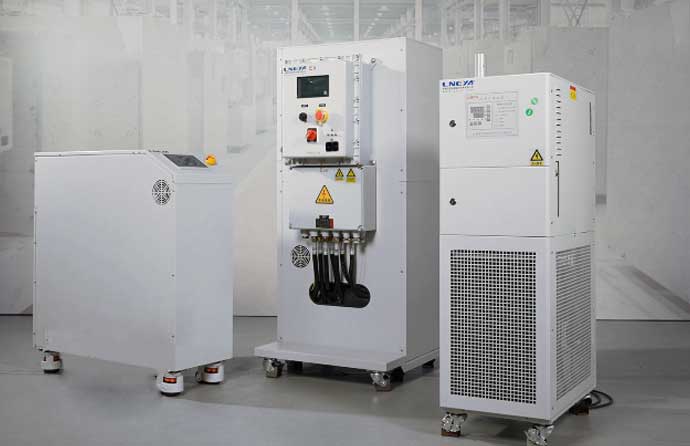How Semiconductor Chillers Improve Reliability in Chip Testing

- What is an air-Cooled Chiller
- What is a Water-Cooled Chiller
- Low GWP Refrigerants in Semiconductor Chillers
- What Is a Burn In Chamber
- Why Chip Testing Needs Semiconductor Chillers
- Semiconductor Chillers in Chip Testing
- Semiconductor Chillers in Wafer Dicing
- Semiconductor Chillers in Packaging
- 2025年8月
- 2025年7月
- 2025年6月
- 2025年5月
- 2025年3月
- 2025年2月
- 2025年1月
- 2024年12月
- 2024年11月
- 2024年10月
- 2024年9月
- 2024年8月
- 2024年7月
- 2024年6月
- 2024年5月
- 2024年4月
- 2024年3月
- 2024年2月
- 2023年9月
- 2023年7月
- 2023年6月
- 2023年5月
- 2023年1月
空冷チラー チラー Chiller Installation チラーズ コールド・アセンブリー・フリーザー 冷却チラー 冷却暖房サーキュレーター 冷暖房システム cooling water chiller Double-Layer Glass Reactor 動的温度制御システム 冷凍庫 ガス冷却チラー 暖房用サーキュレーター industrial chiller industrial cooling industrial freezer 産業用冷蔵庫 jacket reactor 液冷チラー 低温チラー news pharmaceutical chiller process chiller reactor chiller reactor cooling reactor cooling heating 原子炉加熱冷却 reactor system 冷凍サーキュレーター 冷凍チラー スクリューチラー 半導体チラー 半導体テストチラー スンディ TCU 温度調節 試験室 サーモスタット 超低温チラー 車両試験用冷凍機 ウォーターチラー 水冷チラー wtd
Engineers in any semiconductor lab know that a single unstable test can set projects back weeks. Chip testing isn’t only about proving if a design works. It’s about showing that the chip will survive in the real world—where heat, voltage, and time never take a break. Reliability here is everything. And that reliability depends heavily on stable thermal control. That’s where 半導体チラー come in.
What Is Chip Testing and Why Do It?
Chip testing, or semiconductor testing, is where design claims get measured against real conditions. Engineers drive integrated circuits into scenarios that stretch them to the limit. These aren’t casual checks. Tests look for hidden flaws, early-life failures, and the endurance of a chip over time.
Different test stages reveal different truths. Wafer probing identifies defects before packaging. Burn-in testing runs chips under elevated temperatures and voltages to weed out weak ones. System-level testing replicates how chips behave inside real devices.
The goal is clear: confirm that chips can handle years of operation without breakdowns. Without this process, products would hit the market full of risk. Chip testing saves manufacturers from recalls and users from unreliable devices.
Thermal control is one of the toughest challenges in all these steps. Even small swings in temperature distort electrical performance and mask real behavior. Reliable results only come when the environment itself is locked down. That’s where specialized cooling, not generic lab air systems, becomes essential.

Why Semiconductor Chillers Matter in Chip Testing?
Imagine you’re using a new processor. The chip is drawing heavy current, and the setup heats fast. Without active cooling, the device doesn’t just run hot—it gives false data. You may think a design is failing, when in fact the issue is uncontrolled heat. A semiconductor chiller stabilizes this environment, keeping temperature steady during hours or even days of testing.
Precision Cooling
Standard HVAC systems just aren’t built for this job. Air systems fluctuate too much and can’t reach the low setpoints needed. Semiconductor chillers, on the other hand, can hold temperature within fractions of a degree. That stability ensures the only variable under test is the chip—not the room conditions.
Protecting Test Equipment
Chillers don’t just protect chips; they protect the tools around them. Test rigs, probe stations, and laser systems generate heat too. If left unchecked, that heat shortens equipment life and introduces noise into results. With a dedicated cooling loop, semiconductor chillers keep both the chip and the instruments safe, avoiding costly downtime.

Matching Extreme Test Profiles
Modern chips face more demanding use cases than ever—AI workloads, automotive electronics, 5G base stations. These applications push devices to run hotter for longer. Testing them means simulating those stress conditions.
Semiconductor chillers can ramp cooling quickly, follow dynamic test profiles, and switch between heating and cooling when thermal cycling is required. Standard lab coolers can’t keep up with this pace.
Stability Makes Reliability Possible
A chip might pass functional checks but fail later in the field. Many of those failures trace back to unreliable testing environments. By holding temperature rock steady, chillers remove uncertainty from the equation. This gives chip makers and their customers confidence that the results they see in the lab will hold true in the market.
結論
If your team is pushing chips through demanding test programs, don’t leave thermal control as an afterthought. Semiconductor chillers give engineers the high-precision temperature control they need to make the testing reliable.
Talk to a supplier that specializes in semiconductor chillers and understands the stakes — LNEYA team consistently provides you with reliable semiconductor test temperature control solutions.
関連冷凍機
お問い合わせ
TEL
EMAIL:
WeChat & WhatsApp:ウィーチャット

ウィーチャットQR

ご質問やお見積りをご希望の場合は、以下のフォームにご記入ください。24時間以内に担当者よりご連絡させていただきます。
 LNEYA工業用冷凍機 メーカー サプライヤー
LNEYA工業用冷凍機 メーカー サプライヤー
















